*a market, especially held one held on a regular basis in rural areas
The haat is also the tribal way of life, in a nutshell. Transactions in a haat during the olden days were as per the barter system and the wares were mostly forest produce like mahua bloom (used to make a local brew), red ants (for the local staple ‘chapra chutney’), tendu leaves (used to wrap around tobacco to make beedi), vegetables, dried fish, meat, wild fruits and honey. The villagers assembled at a particular place – preferably a large open ground – on a particular day and exchanged commodities as per requirement.
Gradually the inventory expanded to include basic household items like baskets and brooms, clay pots and ropes and accessories like combs and decorative items. In due course currency became standard. Catering to demand, some haats, especially those close to towns, began selling shoes, jeans, jackets, skirts and saris. Stalls dealing in jewellery opened – both original and fake. Then came the skill vendors – the tailor, the barber, the roaming masseur, knife sharpener, voodoo magicians and tattoo makers. Cockfights were apparently there right from the beginning going by its historicity as were local drinks mahua and salfi. The haats performed an important social function – friends and families caught up here, exchanged news and gossip and made new friends. Newly married brides earned their commercial stripes at the haat – displaying their ability to husband resources and pick the best value for money. In short, the haat has always been an intricate part of Chhattisgarhi life. A visit to any one of the haats and one can see how they continue to do so.
The first thing you notice when you enter a haat is the equally proportioned tidy heaps of fruits and vegetables. The arrangement is a time saving device as the price is fixed for each heap; customers are not generally allowed to interchange items between these pre-arranged heaps. Or have to go way back with the seller. Bargaining is not generally seen as people buy mostly in small quantities and also everybody seems to have a good enough idea of how much something should cost – probably a throwback to the good old barter days. Most of the sellers seemed to be women and old men; the young lads, if not buying stuff congregated around the cockfight arena. A gaggle of young ladies descends next to a jeweller, giving opinions about the others’ trinket or bauble. Friends who bumped into each other apparently towards the end of their shopping talk animatedly for long not heeding the large, laden baskets on their heads.
The mahua and salfi sellers have delegated for them an open area removed from the commercial core of the market. The cockfight arena comes next to it; the brew area is almost like a transition point – the guys emerging from the markets bogged down with bags and sacks down a few glasses and make a beeline to the fight with renewed vigour. The last of their notes come out fluttering, wagering on the ‘kariya’ (black), ‘pandri’ (white) or ‘chokha’ (brown) gamecocks.
The different haat days of Bastar: Monday: Tokapal; Tuesday: Pakhnar (10 km from Chingitarai); Wednesday: Darba (near Tirathgarh); Thursday: Kodenar (en route Dantewada); Friday: Lohandiguda; Saturday: Madum; Sunday: Chingitarai
Women wear the entrepreneur hat on the market day.
The young housewife earns her commercial stripes at the haat.
The men are relegated to the background, women take centrestage.
Red ants for the ‘chapra chutney’ – a local delicacy.
A woman’s second best friend.
Some things just don’t change – a friendly banter works better at bargain.
The sanctity of the heaps are not to be tampered with.
This one is waiting its turn at the cockpit.
A time to catch up.
Mahua bloom – brew it yourself.
Top view of the Lohandiguda haat – among the biggest in Bastar.


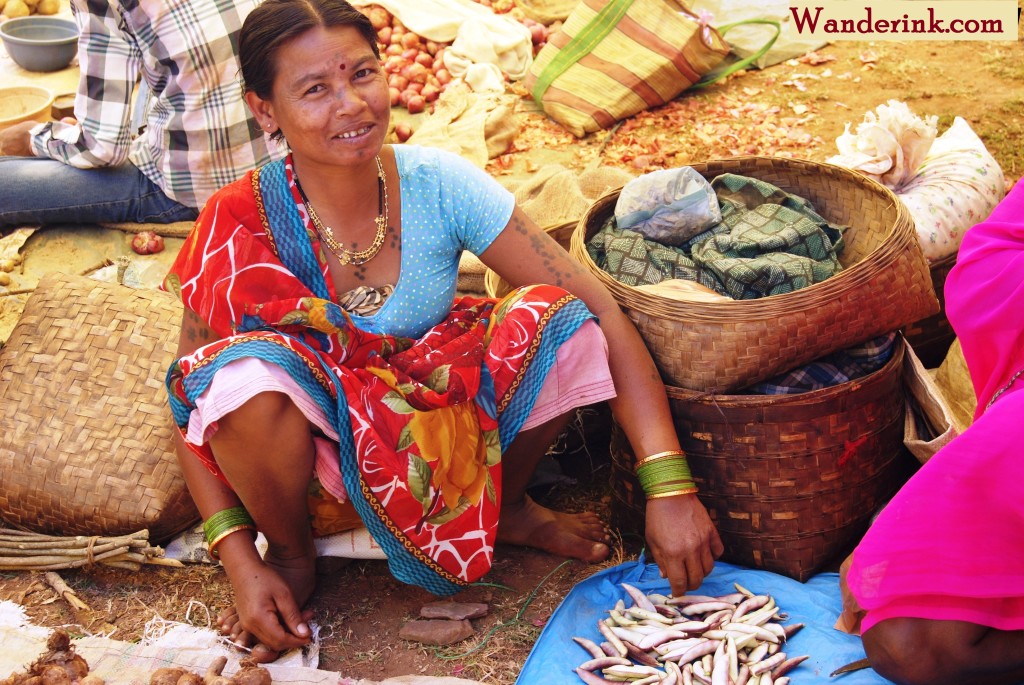
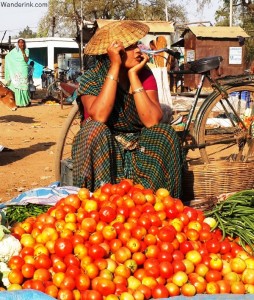
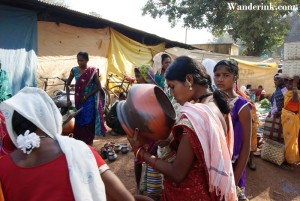

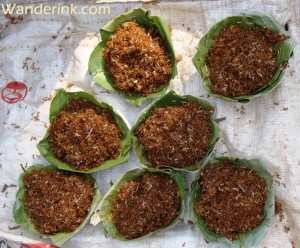
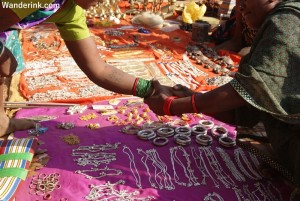
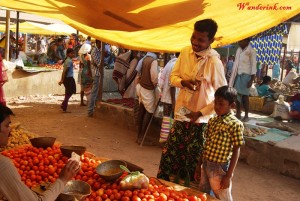

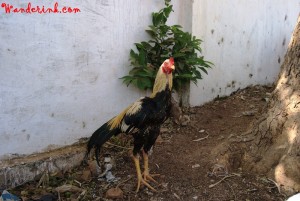
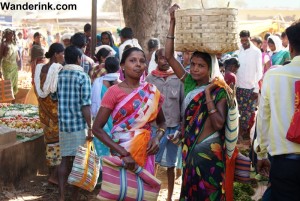
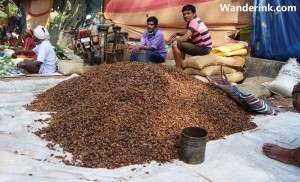
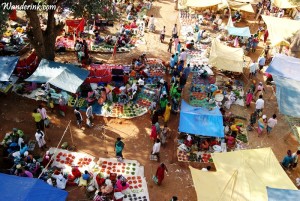









Nice shots and great descriptions! 🙂 🙂
Thank you Archana!